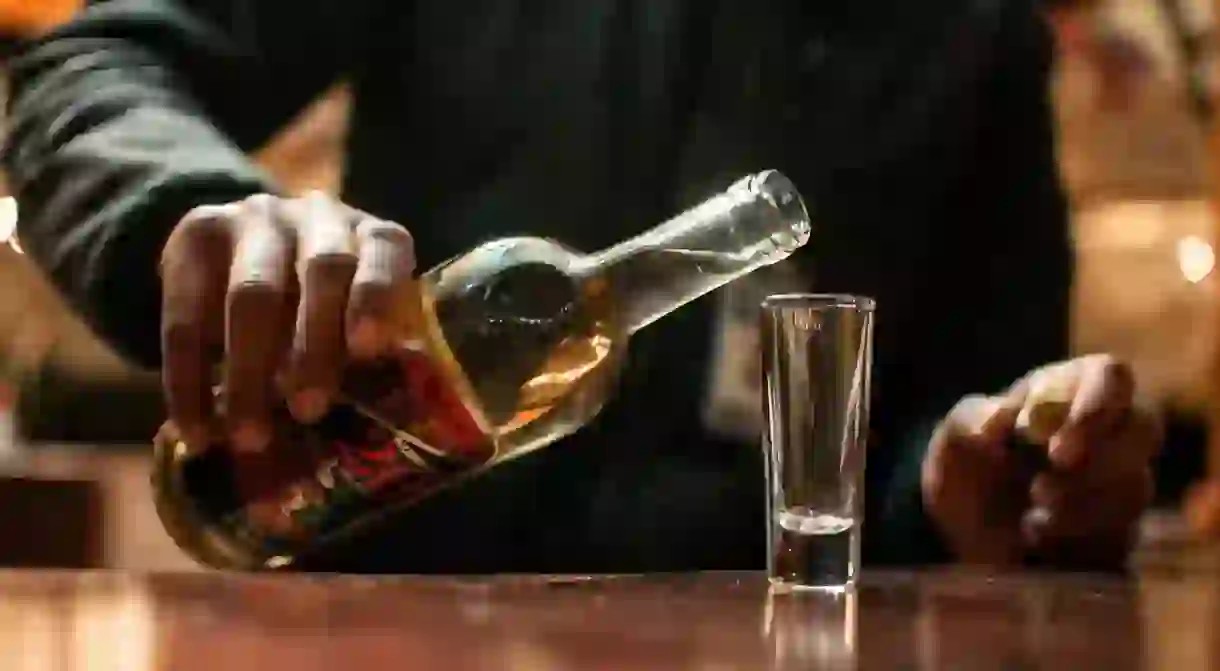Everything You Need to Know About the Mezcal Renaissance

The so-called mezcal renaissance has been a long time in the making and an even longer time in the happening. For the last decade or so, mezcal’s popularity has been steadily on the rise, as mezcalerías have popped up in major cities around the world and across Mexico – discounting Oaxaca, of course, which has always been ahead of the curve when it comes to this potent spirit. Here’s everything you need to know about the rise and rise of mezcal.
What is Mezcal?
The older brother to tequila, mezcal was once considered the less refined predecessor of the drink that made Mexico famous, despite the fact that tequila itself is just a cleverly branded type of mezcal. Typically a more flavoursome beverage than your everyday tequila, though, mezcal is smokier and far more diverse in flavour due to the variability of the agave. While tequila can only be called as such if it comes from the state of Jalisco and is made with blue agave, mezcal can be harvested and produced anywhere and from a variety of more than 30 (usually wild) agave plants.
As far as the manufacturing process goes, mezcal – which means ‘cooked maguey (agave)’ in Náhuatl – is made by roasting the agave artisanally, rather than steaming it commercially, as tequila producers do. That’s where you get your typical mezcal smokiness from, but it’s worth noting that the worm in the bottle isn’t an authentic touch!

And What About the Mezcal Renaissance?
One of the reasons for the rise in mezcal’s popularity is undoubtedly the improved regulations surrounding production and exportation. Before, any old mezcal could be marketed, which got it a rather unwholesome reputation for being a potent and not at all pleasant drinking experience. However, 2005 saw the arrival of official certification and regulation laws, and with that began the sparks of a full-blown boom.
Some astute people have suggested that this then made mezcal production and exportation fertile ground for entrepreneurs to step in, boosting the profile of small-time producers and mezcal itself.

Another factor in the rise of mezcal is the associated national pride of having a globally popular spirit right on your doorstep, combined with a need for youth culture to break away from the trappings of middle-age, which were becoming associated with tequila.
Outside of Mexico, it’s the bartenders and mixologists that are really making a name for mezcal, by incorporating it into endless quirky cocktails that are both surprising and delightful. A notable stand-out is restaurant chain Wahaca’s G&T made with mezcal rather than gin.

Where Can You Try Some?
Some of the best spots to head to for an authentic mezcal experience include the centre of mezcal production, Oaxaca. Here, tours to independent fábricas de mezcal (mezcal factories) abound, and you can see the traditional manufacturing process while you’re at it. Don’t rule out other states for authentic mezcal tasting experiences, though! Oaxaca grabs the attention, but places like San Luis Potosí in the north have also begun dabbling in the mezcal mundo.

For a tipple rather than a bottle, keep your eyes peeled for mezcalerías (mezcal bars) in particular, although it’s likely that any decent bar popular with a youthful crowd will have a mezcal or two on the menu nowadays. Speaking of which, this drink can now be found right around the world in hip cocktail bars and beyond.
Just remember, if you order it straight, you should sip not shoot it, and it’s not uncommon to accompany it with some spicy salt and a slice of orange.














